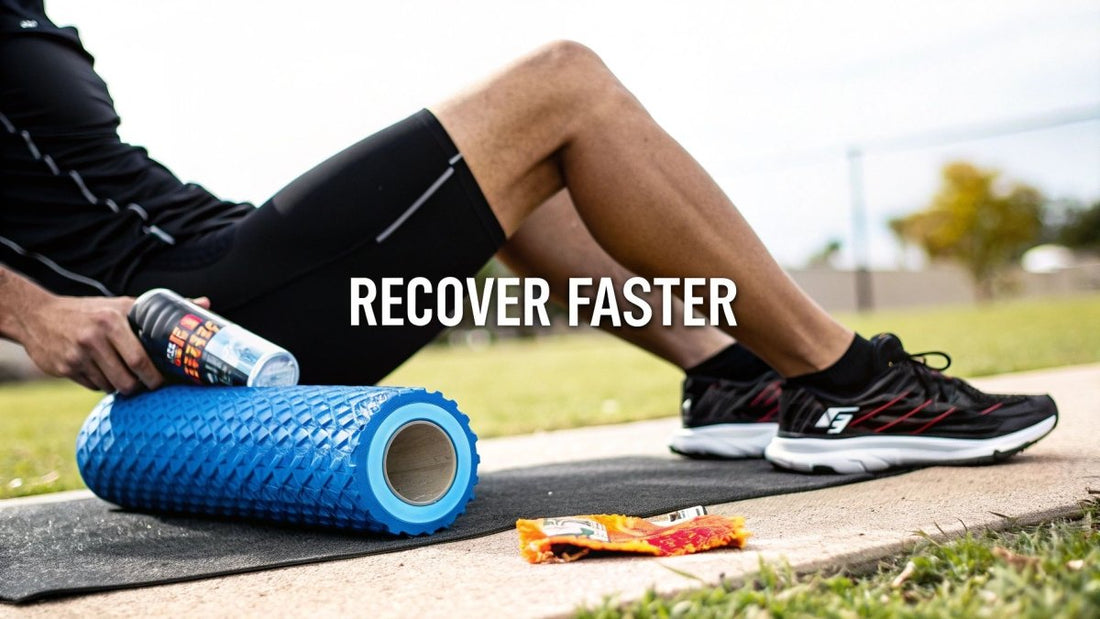
How to Recover Muscles Faster After Workouts
Share
If you want to get back in the gym faster and stronger, your recovery game needs to be just as dialed-in as your training. This isn't just about kicking your feet up and waiting for the soreness to fade. True recovery is an active process—a strategic blend of nutrition, smart rest, and specific techniques that help your body rebuild and adapt.
Why Smart Recovery Is Your Ultimate Fitness Advantage
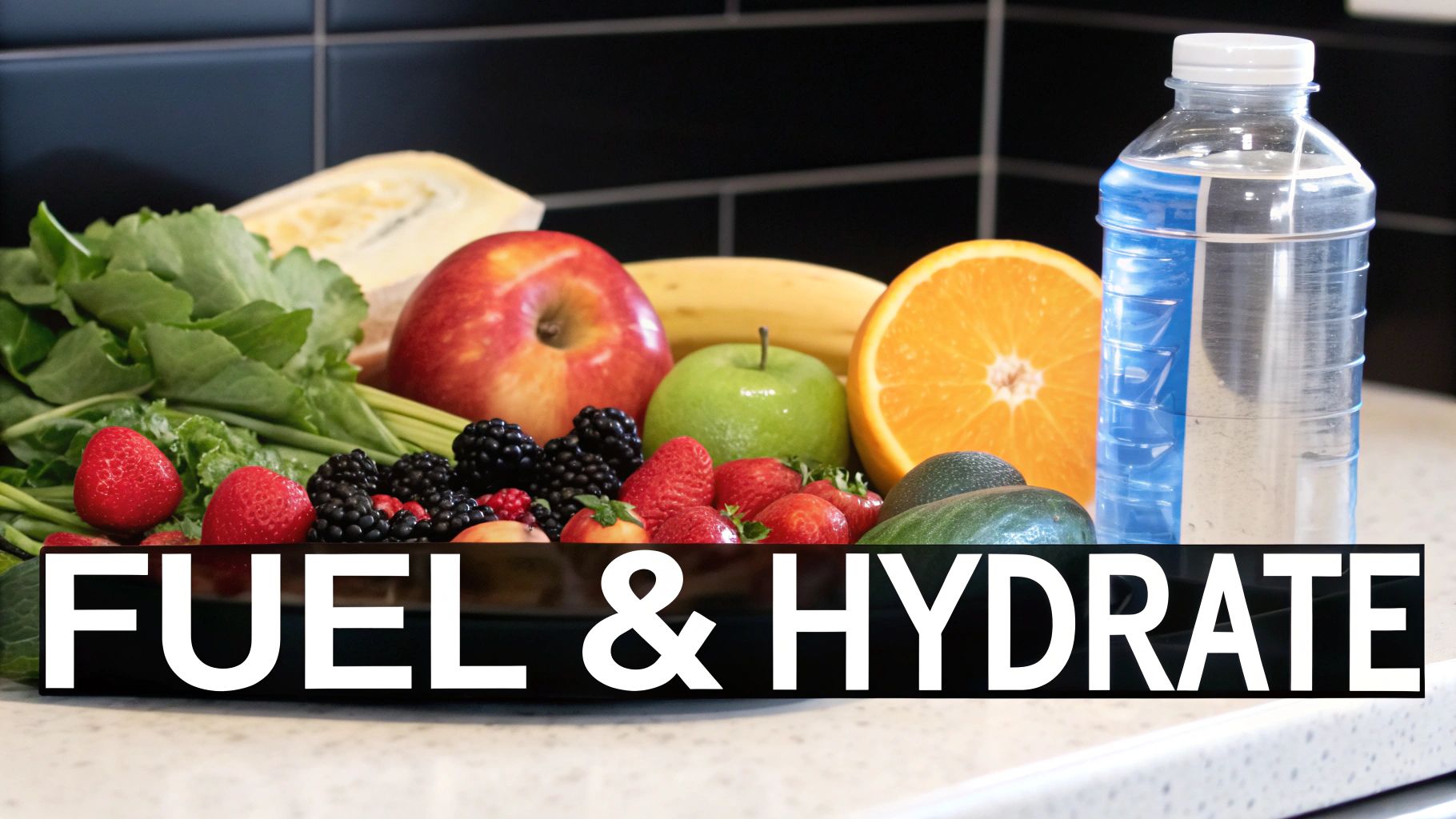
We've all heard the old "no pain, no gain" mantra, but honestly, it's missing the most important part of the story. The real magic—the muscle growth, the strength gains, the improved endurance—doesn't happen during your last heavy set. It happens after.
Ignoring what you do between workouts is the quickest way to stall your progress, burn out, or worse, get injured.
Every tough training session creates tiny micro-tears in your muscle fibers. This isn't a bad thing; it's the signal that triggers your body's repair-and-rebuild response. That familiar ache you feel a day or two later is what we call Delayed Onset Muscle Soreness (DOMS), and it's a sign you put in the work. It usually hits its peak 24 to 48 hours after your workout and is a perfectly normal part of the process.
The Science of Muscle Repair
It’s crucial to know the difference between the "good" soreness of DOMS and the "bad" pain of an injury. DOMS feels like a dull, widespread ache across the muscles you targeted. Injury pain, on the other hand, is usually sharp, immediate, and concentrated in one specific spot.
Treating recovery as a non-negotiable part of your fitness routine is what separates casual gym-goers from those who see consistent, long-term results. It’s the bridge connecting the effort you put in with the results you get out.
To build that bridge, you need to focus on a few key pillars:
- Nutrition: You have to give your body the building blocks—protein to repair muscle tissue and carbs to restock your energy stores.
- Strategic Rest: Quality sleep is everything. It's when your body releases the key hormones that drive growth and repair.
- Targeted Techniques: Things like active recovery and proper hydration help flush out metabolic byproducts and manage inflammation, speeding everything up.
Think of it this way: by focusing on these elements, you’re not just easing soreness. You're creating the perfect environment for your muscles to rebuild bigger and stronger than before. This means faster progress, better performance, and more consistency.
Ultimately, figuring out how to recover muscles faster is about working smarter, not just harder. It’s an active, intentional process. Nailing these principles turns your downtime into your biggest performance enhancer. For a more detailed breakdown, you should check out our complete guide to post-workout recovery.
Your Post-Workout Nutrition Playbook
Think of your body like a construction site after a tough workout. The training session was the demolition crew, creating those essential micro-tears in your muscle fibers. Now, your nutrition is the team that shows up to clear the debris, deliver fresh materials, and rebuild everything bigger and stronger than before.
What you eat—and when—is the single most important factor in how well that rebuilding process goes.
For years, the fitness world was obsessed with the “anabolic window.” The theory was you had a tiny 30-minute slot after training to chug a protein shake, or you’d basically wasted your workout. We now know that’s not quite right. While your muscles are definitely primed to soak up nutrients after exercise, that window is much wider than we thought.
You realistically have a one to two-hour timeframe to kickstart the refueling process. That’s great news for anyone who can't immediately whip up a meal after leaving the gym.
Building Blocks and Energy Stores
Your post-workout meal should have two non-negotiable components: protein and carbohydrates. They're a tag team that gets the recovery process moving.
- Protein for Repair: Aim for 20-40 grams of high-quality protein. This delivers the amino acids your body needs to patch up the damage and synthesize new muscle tissue.
- Carbohydrates for Replenishment: Get in about 0.5-0.7 grams of carbs per pound of body weight. This is all about restocking the muscle glycogen you torched for energy, which is critical for performing well in your next session.
So, what does this look like in the real world? After a brutal leg day, a simple and powerful meal could be a grilled chicken breast (protein) with a large sweet potato (carbs) and some broccoli. Another go-to of mine is a smoothie made with Greek yogurt, a banana, and a scoop of quality protein powder. It’s fast, easy, and effective.
The Micronutrients That Matter
While protein and carbs grab all the headlines, smaller micronutrients play crucial supporting roles. Two of the most important for muscle function are magnesium and potassium. Magnesium helps regulate muscle contractions and can reduce post-workout cramps, while potassium is a key electrolyte for managing hydration and shuttling nutrients into your cells.
Don't sweat the small stuff—but do pay attention to the small nutrients. A handful of almonds, a banana, or a side of spinach can deliver these key players, turning a good recovery meal into a great one. Think of them as the skilled technicians keeping the whole operation running smoothly.
This table breaks down the essentials your body is craving after a workout.
Essential Nutrients for Muscle Recovery
| Nutrient | Primary Role in Recovery | Excellent Food Sources |
|---|---|---|
| Protein | Provides amino acids to repair and build muscle tissue. | Chicken, fish, eggs, Greek yogurt, lean beef, protein powder |
| Carbohydrates | Replenishes depleted muscle glycogen (energy stores). | Sweet potatoes, quinoa, oats, brown rice, bananas, berries |
| Potassium | An electrolyte that helps with hydration and nerve function. | Bananas, avocados, sweet potatoes, spinach, coconut water |
| Magnesium | Aids in muscle contraction, relaxation, and protein synthesis. | Almonds, spinach, dark chocolate, black beans, avocados |
| Antioxidants | Help reduce inflammation and cellular stress from exercise. | Berries, dark leafy greens, cherries, nuts, green tea |
Having this knowledge helps you build meals that do more than just fill you up—they actively accelerate your recovery.
Recovery drinks, which often combine carbs, proteins, and electrolytes, have become a popular and incredibly convenient way to hit these targets quickly. They’re designed to give your body exactly what it needs right when it needs it most. The market for these drinks was valued at around USD 1.65 billion in 2025 and is projected to climb to USD 2.15 billion by 2030, which shows just how many athletes rely on them. You can discover more about the recovery drink market trends and their place in modern fitness.
Finally, remember that nutrition is just one piece of the puzzle. It works best when paired with solid rest. Just look at how much sleep impacts your body's ability to repair itself.
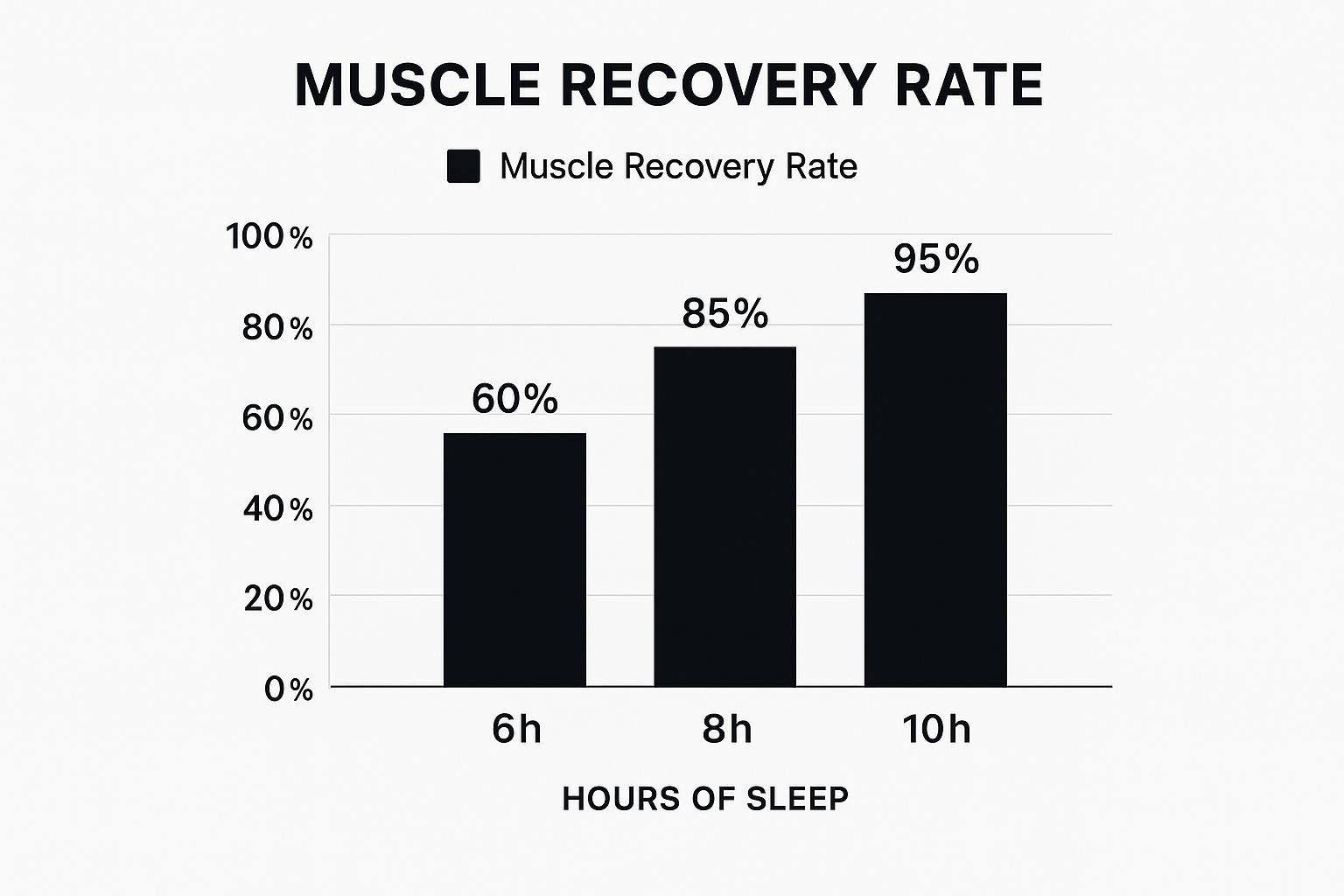
The data is crystal clear: jumping from six to eight hours of sleep gives you a massive boost in muscle recovery. It’s a powerful reminder that you can’t out-eat a bad sleep schedule.
Using Supplements to Accelerate Repair
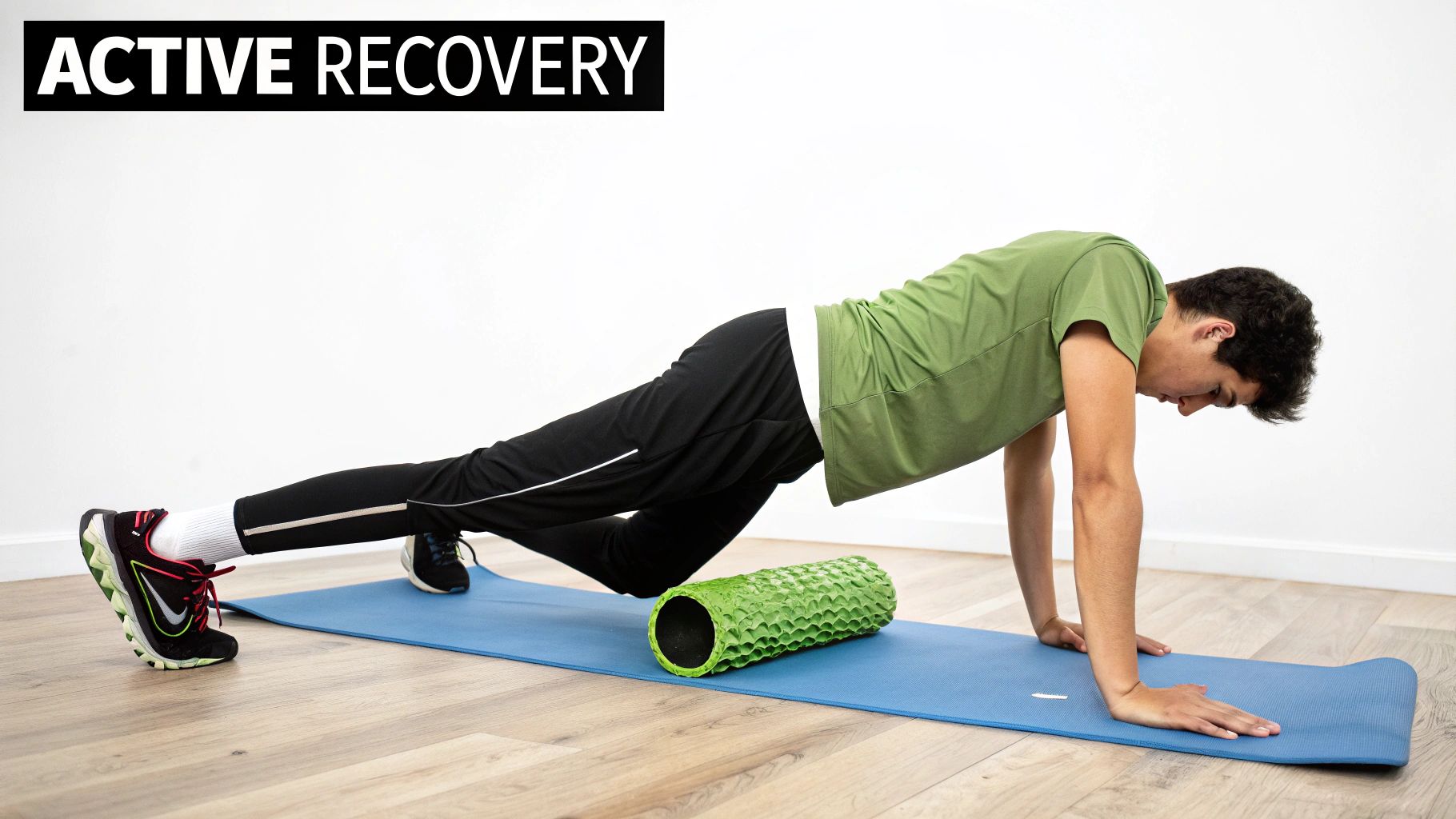
Think of your diet as the bedrock of your recovery. But if you want to speed things up, smart supplementation can be your secret weapon. This isn't about looking for a magic bullet; it's about using specific, proven tools to enhance what your body already does naturally.
Getting this right means understanding what’s backed by real science versus what’s just marketing hype. A smart strategy here can give you a noticeable edge in how quickly you bounce back.
The Power of Creatine for Recovery
Most people hear "creatine" and immediately think of strength and power gains. They're not wrong, but that's only half the story. The recovery benefits are huge, yet somehow they always fly under the radar.
Creatine works by helping your body regenerate ATP (adenosine triphosphate), which is the fuel your cells run on. More creatine in your muscles means you can not only push harder during your workout but also refuel and repair much more efficiently afterward. The result? You're ready to hit your next session at full strength, sooner.
I remember what it was like to be completely wiped out for days after a heavy squat session. The deep, lingering muscle fatigue was brutal. Once I made creatine a consistent part of my routine, I felt a real difference. That soreness just didn't stick around as long.
The old way was dealing with messy, chalky powders. Now, things like Smash.com's creatine gummies make getting your daily 5 grams incredibly easy and mess-free. It's a small tweak, but that consistency is what drives the results.
Strategic Protein and Amino Acid Use
A high-quality protein powder is a non-negotiable for anyone serious about recovery. Whether you prefer whey or a plant-based option, it delivers a fast-absorbing source of the amino acids your body needs to start repairing damaged muscle fibers. This process is called muscle protein synthesis, and a post-workout shake kickstarts it immediately.
The muscle recovery powder market gives you a sense of how many athletes rely on this strategy—it was a US$ 5.6 billion industry in 2019 and is on track to hit US$ 8.3 billion by 2024. You can discover more insights about the muscle recovery powder market to see just how common this approach has become.
Key Takeaway: Don't just see a post-workout shake as a snack. It's a direct shipment of raw repair materials to your muscles right when they need it most.
Some athletes also find value in Branched-Chain Amino Acids (BCAAs). These three aminos—leucine, isoleucine, and valine—are believed to help reduce muscle breakdown during training and can sometimes ease post-workout soreness.
Making the Right Choice for You
The supplement aisle can be overwhelming. My advice? Don't overcomplicate it. Start with the basics that have the most research behind them.
Here's a simple, effective game plan:
- Creatine: This is a must for anyone pushing their limits. A daily dose of 3-5 grams is the sweet spot.
- Protein Powder: An incredibly efficient way to hit your daily protein goals. A 20-40 gram serving after your workout is perfect.
- BCAAs: Worth considering if you're doing very long, intense sessions or training on an empty stomach and want to protect your muscle tissue.
Ultimately, supplements are meant to supplement a solid nutrition plan, not replace it. They should fit your specific training style and goals. To learn more about how different supplements can work together for optimal results, check out our guide on which supplements are best for muscle recovery. Making smart choices here will help you recover faster, train harder, and see better progress.
Don’t Underestimate Sleep and Active Recovery
You can nail your nutrition and have the perfect supplement stack, but the real repair work—the kind that builds serious muscle—kicks into high gear when you finally step away from the gym. Effective recovery isn't just about crashing on the couch. It's a powerful one-two punch of deep, restorative sleep and light, intentional movement.
Most people think of sleep as just "shutting down," but for your muscles, it's peak business hours. This is when your body goes into full-on repair mode, mending the micro-tears you created during your workout. As you sleep, your body releases critical hormones like Human Growth Hormone (HGH), which is the MVP of tissue repair and muscle growth.
Trying to build muscle on poor sleep is like asking a construction crew to build a skyscraper with half their tools missing. It just doesn't work.
How to Get Better Sleep Tonight
Improving your sleep quality is one of the biggest levers you can pull for better recovery. The good news? You don't need a massive life overhaul. Small, consistent tweaks are what truly move the needle.
- Stick to a Schedule: Try to go to bed and wake up around the same time each day, even on weekends. This simple act helps regulate your body's internal clock, or circadian rhythm.
- Curate Your Cave: Your bedroom should be a sanctuary for sleep. Make it as dark, cool, and quiet as possible. I've found that blackout curtains and even a simple white noise machine can make a world of difference.
- Ditch the Screens: That blue light from your phone and laptop messes with melatonin, the hormone that tells your brain it's time to sleep. Put the devices away at least an hour before you plan to turn in.
Sleep is one of the most fundamental pillars of muscle repair. To dig deeper into this, check out this excellent resource on Sleep and the Impact of Our Overall Health.
The "Secret Weapon" of Active Recovery
On your rest days, collapsing on the couch might feel like the only logical choice, but staying completely still isn't always the fastest way to bounce back. This is where active recovery comes into play.
Active recovery is just low-intensity exercise you do the day after a tough session. The point isn't to tax your muscles further, but to gently increase blood flow to those sore areas. This fresh circulation delivers oxygen and nutrients while helping flush out metabolic byproducts that make you feel sore and sluggish.
Think of it this way: metabolic waste left in your muscles is like leaving trash scattered all over a construction site. Active recovery is the cleanup crew that sweeps everything away, clearing the path for the real rebuilding to begin.
This gentle movement can drastically shorten how long and how intensely you feel that post-workout soreness. And when you pair this strategy with smart supplementation, the effects are even better. Our guide on how to take creatine and protein together explains how to create a synergistic effect that supports both performance and repair.
An Easy Active Recovery Session
Your active recovery day should be short and sweet—think 20-30 minutes tops. You just want to get your heart rate up a little without putting any real stress on your muscles.
Here's what a simple session could look like:
- Light Cardio (10-15 minutes): A brisk walk outside, a slow spin on a stationary bike, or a light jog.
- Foam Rolling (5-10 minutes): Gently work on the major muscles you trained, like your quads, glutes, hamstrings, and back. Don't go too hard; the goal is to release tension, not cause more pain.
- Dynamic Stretching (5 minutes): Finish with some gentle, movement-based stretches. Think leg swings, arm circles, and torso twists to get everything moving freely.
By making both quality sleep and light activity part of your routine, you transform your "downtime" into a powerful engine for building muscle and getting better results.
Bringing Pro-Level Recovery Tech Home
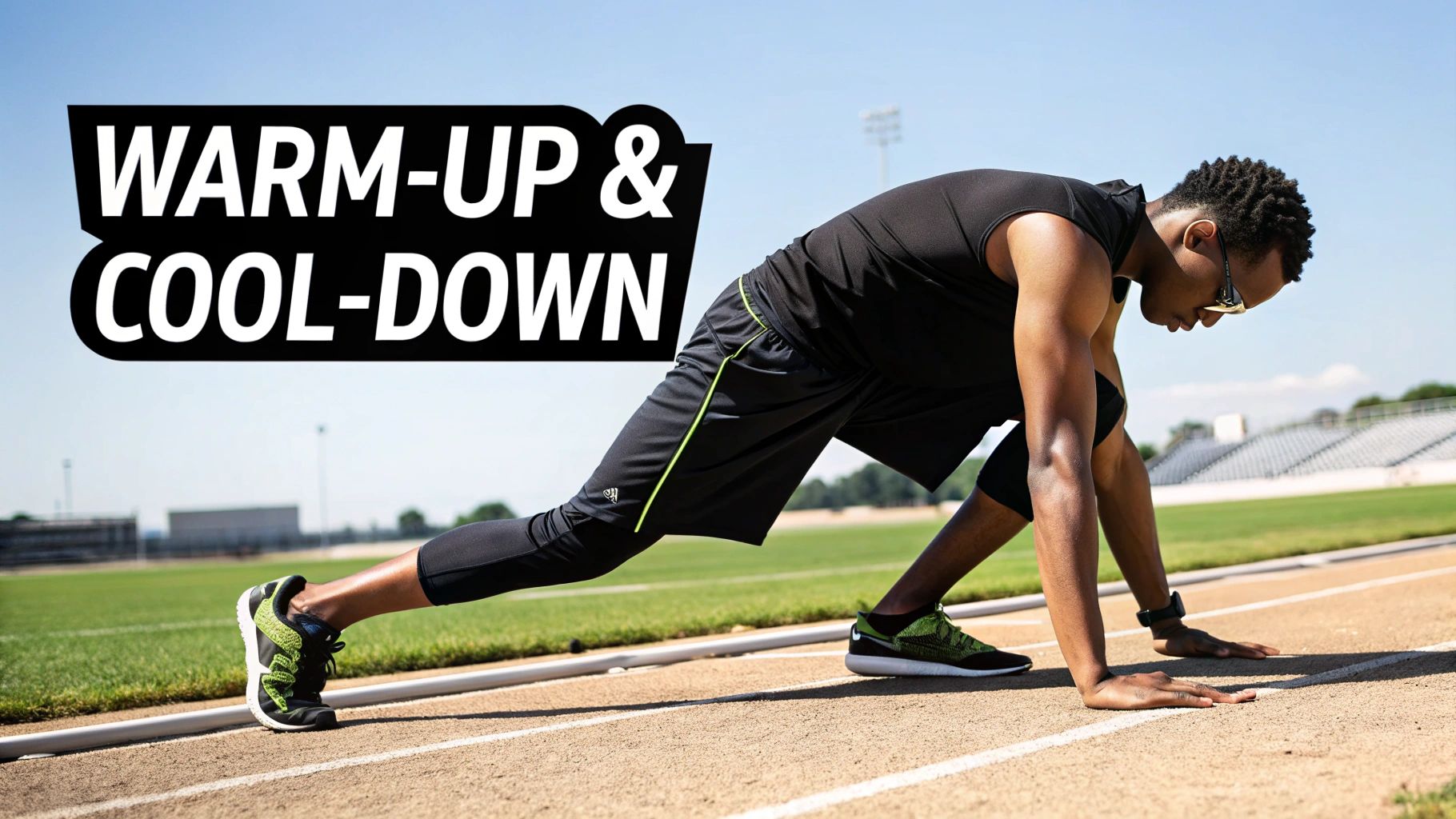
It wasn't long ago that advanced recovery tools were tucked away in elite athletic facilities. Now, that same game-changing technology is available for anyone to use right at home, giving you a serious advantage in your training. These gadgets are much more than just trendy toys; when you know how to use them, they can make a real difference in shortening downtime and helping your body repair itself.
This shift is huge. The sports recovery tech market, which includes things like massage guns and compression gear, hit a value of about USD 1.32 billion in 2024 and is climbing fast. It’s not just pro athletes driving this growth—it’s everyday people who are serious about their fitness and want to know how to recover muscles faster. You can dig deeper into the sports recovery tech market's growth to see just how mainstream these tools have become.
Master the Massage Gun
A percussive massage gun is probably one of the best investments you can make for tackling deep muscle knots and boosting blood flow. I like to think of it as a DIY deep-tissue massage you can get on demand. It works by sending rapid pulses deep into the muscle, breaking up tension, easing soreness, and even improving your range of motion.
But a lot of people just use it after they train, which is only half the story. Here's how to get the most out of it:
- Pre-Workout Activation: Before you lift, spend about 30-60 seconds on each muscle group you’re about to hit. Keep the pressure light to medium and don't linger on one spot. This wakes up the muscles, gets the blood moving, and primes them for exercise without wearing them out.
- Post-Workout Relaxation: After your cooldown, go back to the muscles you worked and spend 1-2 minutes on each sore spot. The goal here is pure relaxation—helping the tissue calm down and kickstart the recovery process. This can help clear out some of the metabolic waste that leads to next-day aches.
A massage gun is a tool, not a toy. Using it with a clear purpose—activation before your workout and relaxation after—is how you unlock its real potential for both recovery and performance.
Compression Gear and Contrast Therapy
Beyond the gadgets that buzz and pulse, some brilliantly simple tech can have a massive impact. Compression gear, like socks and sleeves, works by applying steady, gentle pressure. This helps minimize swelling and improve circulation, giving your body’s natural cleanup crew a hand in moving blood and fluid more efficiently. I’ll often throw on a pair of compression socks after a tough leg day or a long run to fend off that heavy, achy feeling.
Another fantastic, low-cost technique is contrast water therapy. All this means is switching between hot and cold water in the shower. It sounds simple, but it works.
Here’s a protocol I stick to:
- Start with hot water for 2-3 minutes.
- Switch to cold water for a full 1 minute. (Brace yourself!)
- Repeat this cycle 3-4 times, making sure you end on a cold blast.
The quick temperature changes make your blood vessels shrink (cold) and expand (hot). This creates a natural "pumping" action that helps flush out inflammation and waste products from your muscles. It's an incredibly effective recovery method you can do without any fancy equipment.
Got Questions About Muscle Recovery? Let's Get Them Answered
Even when you think you've got your recovery dialed in, questions are bound to pop up. Sorting out these common sticking points is how you truly master the process and learn to adapt on the fly. Let's dig into some of the questions I hear all the time from people trying to get the most out of their training.
How Do I Know if It's Soreness or a Real Injury?
This is a big one, and learning to tell the difference is crucial for staying in the game long-term.
Think of normal soreness, what we call Delayed Onset Muscle Soreness (DOMS), as a dull, widespread ache in the muscles you just worked. It's that classic "I know I trained hard" feeling that usually shows up 24 to 48 hours later and then slowly gets better.
An injury feels completely different. It's often a sharp, sudden pain you can point to with one finger. It might flare up only during a specific movement and can bring along friends like swelling, bruising, or a sudden drop in strength.
My Personal Rule: If the pain is sharp, doesn't go away after a few days, or stops you from moving normally, that's not DOMS. That's your body waving a red flag. Listen to it. Back off, and if it's still there, get it checked out by a pro.
Does Recovery Change for Cardio vs. Lifting?
Absolutely, though the fundamentals like sleep and hydration are always key. The biggest shift is what you prioritize with your nutrition immediately after you're done.
- After a Heavy Lifting Session: Protein is king. You’ve created tiny micro-tears in your muscle fibers, and your body is screaming for amino acids to patch them up and build them back stronger.
- After a Grueling Cardio Workout: Now, carbohydrates take the top spot. A long run or intense HIIT session drains your muscle glycogen (your body's onboard fuel). You have to restock those energy stores if you want to perform well next time.
So while both types of training need a full recovery toolkit, tailoring your post-workout meal to the specific demands you just placed on your body makes a world of difference.
Seriously, How Bad are Stress and Alcohol for Recovery?
They're game-wreckers. I call them the recovery killers for a reason.
High stress is a disaster because it jacks up your cortisol levels. Cortisol is a catabolic hormone, meaning it literally breaks down muscle tissue and gets in the way of the repair process you're working so hard to kickstart.
Alcohol is even worse—it's a triple-threat. It dehydrates you, messes with your sleep architecture (especially the deep REM sleep you need for hormone production), and has been shown to directly slow down muscle protein synthesis. Knocking back a beer right after a killer leg day is one of the fastest ways to undo your hard work. If you're serious about your results, keeping stress in check and alcohol to a minimum isn't optional.
Ready to stop guessing and start recovering smarter? Give your muscles the proven fuel they crave with Smash.com creatine gummies. They're the simplest, most delicious way to get your daily 5g of creatine to crush soreness and bounce back faster. Check them out at https://smash.com.